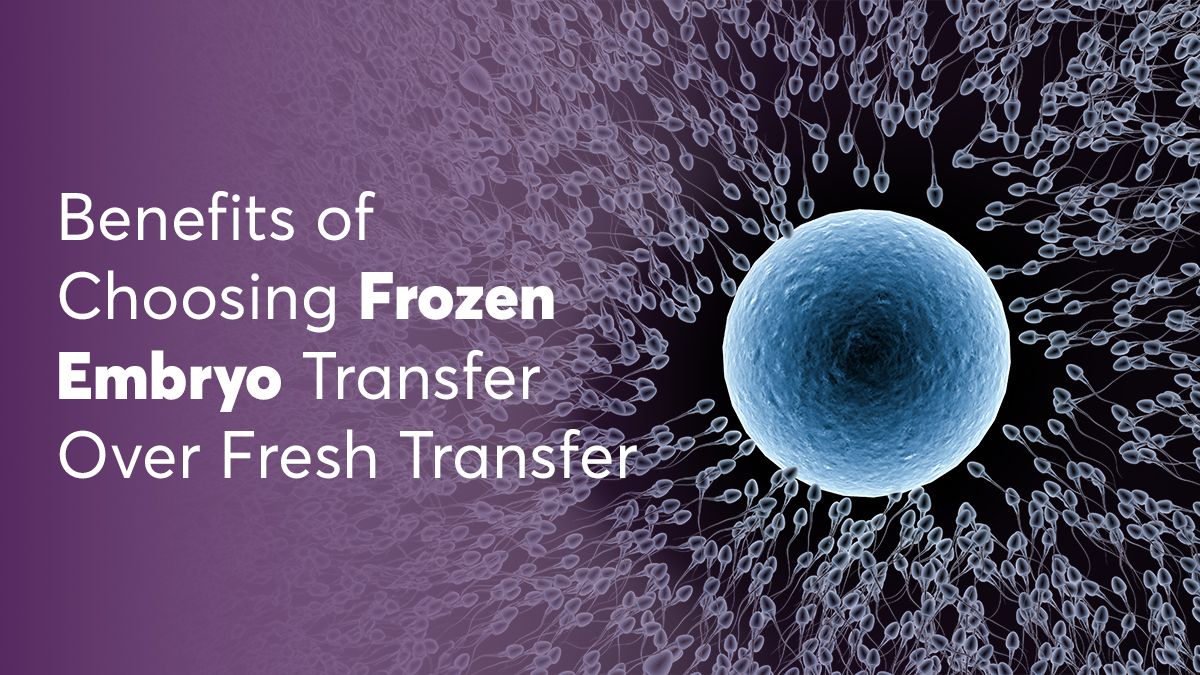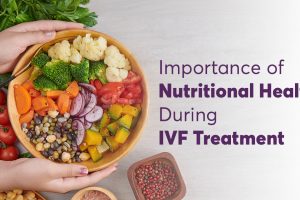Benefits of Choosing Frozen Embryo Transfer Over Fresh Transfer

Assisted reproductive techniques (ART) allow couples to have biological children when they are unable to conceive naturally. A lot of planning and effort by the couple and the IVF specialist goes into successfully having a baby. And raising one is a blessing, irrespective of the way you choose to become a parent. However, the journey can be more overwhelming than natural conception. Along with a lot of planning, you may have to make important decisions during IVF. One such decision is to choose between fresh or frozen embryo transfer (FET). Here’s what you should know about the advantages of choosing FET and how it can lead to a smoother pregnancy.
What is the Difference between Frozen and Fresh Embryos?
In fresh embryo transfer, the IVF specialist places the fertilised egg in the uterus in the same cycle as it was retrieved, typically, after 6 to 8 days of fertilisation. However, in frozen embryo transfer, the embryo is frozen and placed in the uterus in a later cycle. In the early days of IVF, this facility was not available. It has only become possible now with technological advancements. In fact, research suggests that FET significantly increases the chances of IVF success. Blastocysts, formed on the 5th day of egg fertilisation, are known to have high success rates for fresh and frozen embryo transfer. Therefore, embryos are either frozen at this stage for FET or implanted in case of immediate transfer.
How Frozen Embryo Transfer Works
Usually, multiple embryos are created through in vitro fertilisation. Cryopreservation allows fertility specialists to freeze these embryos so that they can be used at a later stage. This is especially useful for couples who do not want to plan a family now but want to preserve their fertility for when they are ready. It is like a pause button till they are prepared for pregnancy.
Benefits of Choosing Frozen Embryo Transfer
There are several advantages of frozen embryo transfer. In fact, in many countries, IVF professionals are adopting FET for ALL, unless the couple’s distinct medical history has other requirements. This means that the first embryo transfer happens only in the cycle following the one in which the eggs were extracted.
More Flexibility for You
Since you are not pressured to get pregnant immediately, you get to plan and time your pregnancy, considering your psychological and physical well-being and preparedness.
Improved Implantation Rates
While embryos are frozen, your endometrial lining gets time to return to its natural state after egg extraction. This reduces the stress and impact of hormonal therapies performed to extract healthy eggs. A relaxed uterus is most suitable for implantation.
Better Outcomes for Mom and Baby
The ovaries are stimulated with gonadotrophins to extract more (in number) high-quality eggs. However, this may result in ovarian hyperstimulation syndrome (OHSS) as a side effect. The chances of OHSS occurring are higher with immediate embryo transfer, which can be fatal to both the baby and the mother. With frozen embryo transfer, the ovaries get time to recover, and the reproductive system rebalances hormones, improving the chances of a successful pregnancy.
Enhanced Safety
Freezing embryos gives time for the IVF specialist to select the most viable embryos and test them for genetic abnormalities. This improves the chances of implantation, smooth pregnancy, and healthy childbirth.
Planning Your Future Family
FET helps preserve fertility and gives you the opportunity to become pregnant even if something untoward occurs. For example, if one of the partners undergoes medical treatments that directly affect reproductive health, such as cancer, immediate transfer and pregnancy may add to the stress. Freezing embryos can preserve the couple’s ability to have biological children in the future.
Moreover, freezing embryos gives you the flexibility to delay conception or space out pregnancies for multiple children.
FET Prioritises Your Emotional and Economic Well-Being
Cost-Effective
Frozen embryo transfer cycles often have lower costs as compared to fresh transfers. Also, since you’re not undergoing ovarian stimulation again, there are fewer medications and procedures involved.
Less Physiological Stress
Going through ovarian stimulation can be physically demanding. Frozen embryo transfer avoids the immediate stress of transferring an embryo and pregnancy right after extraction. This gives your body more time to recover and potentially be more receptive to pregnancy.
Reduced Pressure, Increased Hope
The pressure to conceive within a specific timeframe, associated with fresh transfers, can be stressful. Frozen embryo transfers offer emotional relief by removing that pressure and allowing you to proceed at your own pace.
Preserve Your Fertility With FET
While both fresh and frozen embryo transfers are viable options in IVF, the latter offers many advantages. Frozen embryo improves the success rate of clinical transfers, chemical pregnancies and live births, while reducing the risk of pregnancy loss. The added flexibility and potentially better outcomes make it the favoured choice among fertility professionals. However, stay assured that your IVF specialist will provide the right guidance, based on your specific circumstances and preferences. Know that you will have their support for the best course of action to achieve parenthood at your preferred time.
FAQs on Frozen Embryo Transfer and Fresh Transfer
Q: Is ICSI better with frozen sperm?
A: Intracytoplasmic sperm injection (ICSI) can be performed successfully with both fresh and frozen sperm. The choice between the two often depends on the specific circumstances and preferences of the couple undergoing IVF. Frozen sperm allows for flexibility in timing and can be used when fresh sperm is not available due to various reasons, such as medical treatments or scheduling issues. Your IVF specialist will provide guidance based on your unique situation.
Q: Can frozen embryos become twins?
A: Yes, frozen embryos can lead to twin pregnancies, similar to fresh embryos. The likelihood of twins depends on the number of embryos transferred into the uterus. If more than one embryo is transferred, there is a higher chance of multiple pregnancies, including twins. It is important to discuss the risks and benefits of transferring multiple embryos with your IVF specialist.
Q: Is IVF more successful with frozen embryos?
A: IVF with frozen embryos can be as successful, if not more so, than with fresh embryos. Both, frozen and fresh embryo transfer offer several advantages. However, the success of IVF with frozen embryos depends on various factors, including the quality of the embryos and the specific circumstances of the couple undergoing treatment.
Author: Dr. V Ramya | Consultant & Fertility Specialist










